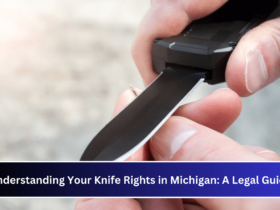Should so-called “ghost guns,” which can be put together from kits at home in as little as 20 minutes, be considered guns under federal law?
The answer is clearly yes if you have any sense at all. A firearm is defined by the law as “any weapon that will, is designed to, or can easily be changed to fire a projectile by the action of an explosive.” It says that “the frame… of any such weapon” is included in the term.
And there’s no question that the law’s goal is to keep Americans safe from criminals using guns that can’t be tracked. This is true for all working guns, including ghost guns.
Still, the Supreme Court heard oral arguments last week about whether ghost guns are firearms. Many conservative judges and the U.S. Court of Appeals for the Fifth Circuit said that the Bureau of Alcohol, Tobacco, and Firearms went beyond what the law allowed it to do when it made it clear that ghost guns had to follow the same rules as other guns: they had to have a serial number and sellers had to do background checks. This rule was made in 2022.
It looks like the judges might come to a reasonable decision after hearing both sides. That’s not certain, though.
The bump stocks ruling
The reason is that the justices didn’t talk about the aim of the law that day. Instead, they got into a lot of technicalities about language, like whether the ATF was right to say that a gun frame that has been partly taken apart is still a gun frame. This is textualism, the idea that laws should be read based on what they say instead of what they supposedly mean.
That’s because this is a lot like a case the court heard last term, which may make you feel sick. That meant the court had to decide if the ATF was right to say that bump stocks were machine guns.
During oral arguments in Garland v. Cargill, the justices also refused to ask the basic question of whether the purpose of the machine gun law was met by including bump stocks, which let semiautomatic assault rifles fire up to 800 rounds per minute. The Supreme Court then said, 6-3, in June that bump stocks can’t be controlled like machine guns.
I’m not sure the court will get the ghost guns question right because of how silly the decision about the bump stock was. There’s no question that ghost guns are dangerous to the public.
The government showed proof that the number of crimes involving these kinds of guns increased by 1,000% in the years before the ATF released its clarifying rule. But the court can’t make a decision based on those real-life effects as long as it wants to only look at the words of a law.
An awkward setup
Because of this, lawyers for “ghost guns” told the judges last week that if gun kits are guns, then AR-15s might also be guns because they can be turned into guns with a kit.
There’s no doubt that the case is weak. Just for a moment, though, think about how ridiculously brazen it is: The judges were warned that if they didn’t treat ghost guns like guns, they might have to treat rifles that can turn into machine guns like, gulp, machine guns.
Five justices will have to say that the text of the law is clear in order to support the ATF’s rule on “ghost guns” without thinking about what the rule is meant to do. They will have to say that the ghost gun kits’ parts can be “readily converted” into guns.
That’s not hard. They will have to say that anything that is easy to change into a gun frame is also a gun frame. That makes sense in terms of what the law is supposed to do, but in a world where laws are often interpreted without using logic, it might test the judges’ ability to understand what the law means.
We can only hope that the judges get it right, even if they do it for the wrong reasons. This awkward position will last until the court finally gets it together and starts looking at the purpose of a law in relation to what it means, which is what almost all legal systems have done since the beginning of time.











Leave a Reply